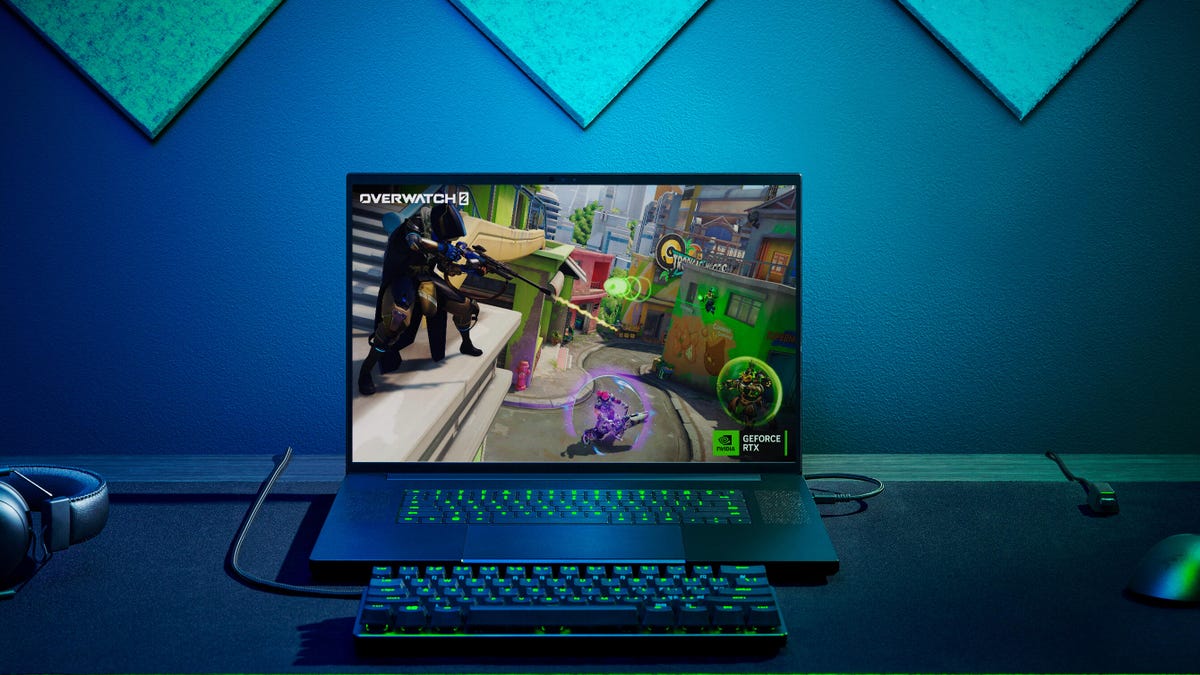Intel's 14th-Gen Laptop CPUs Give Gaming a Boost
The company's new HX processors are more performance optimized, and midrange desktops get a lift, too.

The new Razer Blade 16 can be configured with up to a Core i9 HX series CPU.
Intel had some of the most notable chip announcements at CES, primarily because it launched its 14th-gen HX series -- the overclockable series -- which will power the bulk of the flagship gaming laptops and some of the creator-focused laptops we'll see this year. (Nvidia launched new desktop GPUs and AMD unveiled its new desktop CPUs and a desktop GPU.) They're the step-up from the Core Ultra H series announced in December.
Read more: CNET's Picks for Best of Show, The Most Exciting, Innovative and Impactful Tech Winners of CES 2024
The company also launched its mainstream 14th-gen midpower desktop processors, which you'll see in all-in-ones and systems with prices roughly below $2,000, following the high-end overclockable K-series CPUs announced in October 2023. Intel also took the wraps off its low-power 14th-gen Core mobile U-series processors for ultrathin laptops, the step-down from the higher-end Core Ultra U chips that were also announced in December.
As with most of the announcements, there will be some maximum frequency hype that you may never experience. In this case, it's 5.8GHz, which can theoretically be hit by the Core i9-14900 HX and desktop CPUs if cooling and airflow are sufficient to stay below the system's heat ceiling and the system supports Intel's Thermal Velocity Boost.
Almost all the CPUs announced today incorporate most of the 14th-gen features that launched with the Core Ultra lines -- one notable exception being the new even-lower-power E cores, which the Ultra uses to improve battery life and help with AI acceleration. They're all based on older process technology, Intel 7, as opposed to the Core Ultras which are on the smaller Intel 4 process.
Alienware's m18 R2 also packs a 14th-gen i9.
One upgrade the HX series has that none of the others seem to is support for Thunderbolt 5, which has triple the bandwidth (80Gbps bidirectionally and 120Gbps unidirectional) of Thunderbolt 4, so it can now drive up to three displays and more powerful docks, supports up to 240-watt charging (so you'll be able to use USB-C), faster networking and more; it doesn't necessarily mean that every HX-bearing laptop will offer TB5, though.
The i7 and i9 HX series also get Application Optimization support, which works like AMD's "Smart" technologies to allocate power and processor resources on the fly to improve performance. And they support up to 192GB memory.
14th-gen offers what Intel calls "discrete support" for Wi-Fi 7 and Bluetooth 5.4, which basically means if a manufacturer wants to add a custom communications chipset (which would take up some PCI bus lanes), the system won't barf. Intel does make a chipset available for it, though, the Killer 1750x. But that means it's a manufacturer decision to implement, which lessens the likelihood of it being used it in a particular laptop or motherboard. All 14th-gen processors announced thus far support this.
It should go without saying that all the processors have more cores and can operate at higher frequencies than their predecessors. The Core HX is designed for 55- to 157-watt systems, and the chip line starts at 10 cores (6P/up to 4.8GHz, 4E/up to 3.5GHz)/16 threads for the i5-14450HX to 24 cores (8P/up to 5.8GHz, 16E/up to 4.1GHz)/32 threads for the top-of-the-line i9-14900HX. (As a refresher, P cores are the higher performance and E cores are more battery efficient.)
The Core U 100 series are intended for 15- to 55-watt laptops and consists of three chips at launch: Core 7 150U, Core 5 120U and Core 3 100U. These are characterized by prioritizing battery life over performance, with only two P cores each but four to eight E cores from the i3 to the i7.
As for the new desktop CPUs, they too have more cores and higher frequencies (up to 8P/boost up to 5.1GHz, 16E/boost up to 4.0GHz) for the i9-14900, and are intended for systems that generally use processors in the 60- to 110-watt range (for the i3-14100) to the 65- to 219-watt range (the i9-14900) -- those cover inexpensive to midrange desktops. These are more general chip refreshes, without any technology updates of note.

